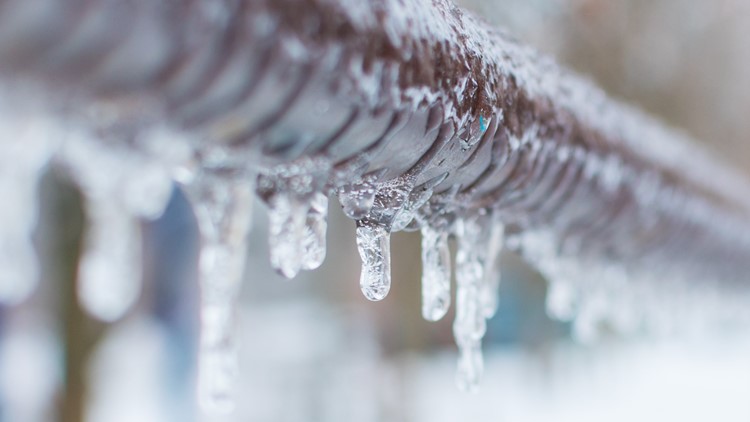Tips to Defend Your Plumbing from Freezing: Critical Strategies
Tips to Defend Your Plumbing from Freezing: Critical Strategies
Blog Article
We have unearthed this great article relating to How to Prevent Your Pipes From Freezing below on the internet and felt it made good sense to quickly share it with you on my blog.

Winter can damage your pipes, specifically by freezing pipelines. Right here's exactly how to avoid it from occurring and what to do if it does.
Introduction
As temperature levels decline, the risk of icy pipes increases, possibly causing expensive repairs and water damages. Comprehending exactly how to avoid icy pipes is important for homeowners in chilly climates.
Comprehending Icy Pipes
What causes pipelines to ice up?
Pipelines freeze when subjected to temperatures listed below 32 ° F (0 ° C) for extended durations. As water inside the pipelines ices up, it increases, taxing the pipe walls and possibly causing them to burst.
Dangers and damages
Icy pipes can lead to water system disturbances, building damage, and pricey repairs. Ruptured pipelines can flooding homes and create substantial architectural damages.
Indications of Frozen Piping
Determining frozen pipes early can prevent them from bursting.
How to identify icy pipelines
Search for decreased water circulation from faucets, uncommon smells or sounds from pipelines, and visible frost on exposed pipes.
Prevention Tips
Protecting prone pipes
Cover pipelines in insulation sleeves or utilize warmth tape to secure them from freezing temperatures. Focus on pipes in unheated or outside areas of the home.
Home heating methods
Maintain interior rooms effectively heated, especially locations with pipes. Open up cupboard doors to allow cozy air to circulate around pipes under sinks.
Shielding Outdoor Pipes
Garden hose pipes and outside taps
Separate and drain yard tubes prior to winter season. Set up frost-proof faucets or cover outside faucets with shielded caps.
What to Do If Your Pipelines Freeze
Immediate actions to take
If you believe frozen pipes, keep taps available to alleviate pressure as the ice melts. Utilize a hairdryer or towels soaked in hot water to thaw pipes gradually.
Long-Term Solutions
Structural adjustments
Consider rerouting pipes far from exterior walls or unheated areas. Include added insulation to attics, basements, and crawl spaces.
Updating insulation
Buy premium insulation for pipes, attics, and wall surfaces. Appropriate insulation aids preserve constant temperature levels and reduces the danger of frozen pipelines.
Verdict
Preventing frozen pipelines calls for aggressive procedures and fast responses. By understanding the reasons, indications, and safety nets, home owners can shield their pipes during winter.
5 Ways to Prevent Frozen Pipes
Drain Outdoor Faucets and Disconnect Hoses
First, close the shut-off valve that controls the flow of water in the pipe to your outdoor faucet. Then, head outside to disconnect and drain your hose and open the outdoor faucet to allow the water to completely drain out of the line. Turn off the faucet when done. Finally, head back to the shut-off valve and drain the remaining water inside the pipe into a bucket or container. Additionally, if you have a home irrigation system, you should consider hiring an expert to clear the system of water each year.
Insulate Pipes
One of the best and most cost-effective methods for preventing frozen water pipes is to wrap your pipes with insulation. This is especially important for areas in your home that aren’t exposed to heat, such as an attic. We suggest using foam sleeves, which can typically be found at your local hardware store.
Keep Heat Running at 65
Your pipes are located inside your walls, and the temperature there is much colder than the rest of the house. To prevent your pipes from freezing, The Insurance Information Institute suggests that you keep your home heated to at least 65 degrees, even when traveling. You may want to invest in smart devices that can keep an eye on the temperature in your home while you’re away.
Leave Water Dripping
Moving water — even a small trickle — can prevent ice from forming inside your pipes. When freezing temps are imminent, start a drip of water from all faucets that serve exposed pipes. Leaving a few faucets running will also help relieve pressure inside the pipes and help prevent a rupture if the water inside freezes.
Open Cupboard Doors
Warm your kitchen and bathroom pipes by opening cupboards and vanities. You should also leave your interior doors ajar to help warm air circulate evenly throughout your home.
:strip_icc()/snow-outdoor-faucet-pipes-4af65d1e5e904fb1aa7bf74071fe5d89.jpg)
I stumbled upon that piece on Prevent Frozen Pipes while looking around the search engines. For those who enjoyed our blog post kindly don't forget to pass it around. I love your readership.
Visit My Web Page Report this page